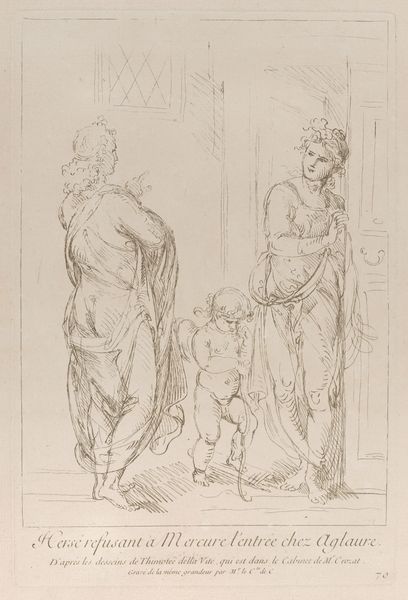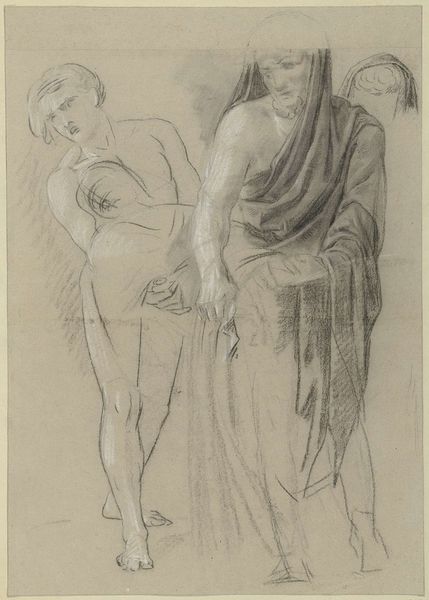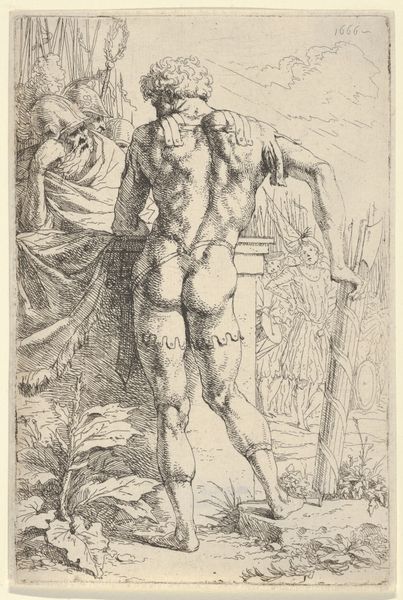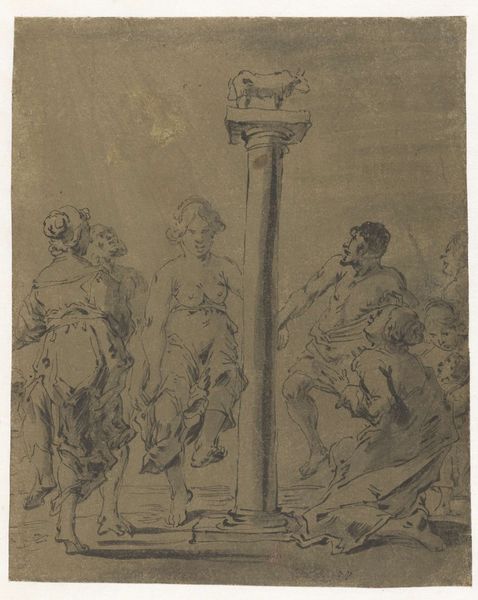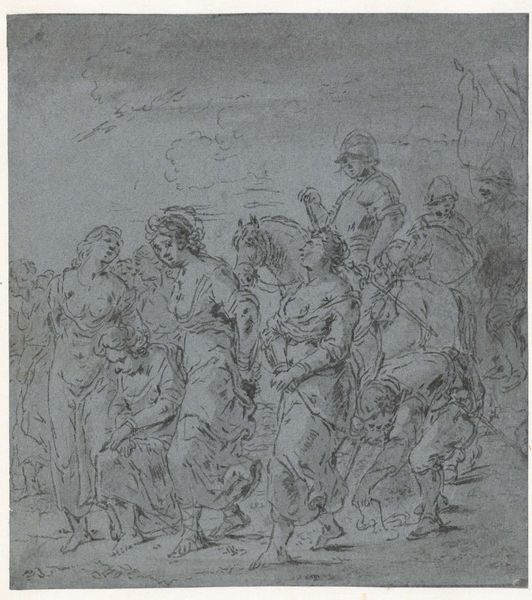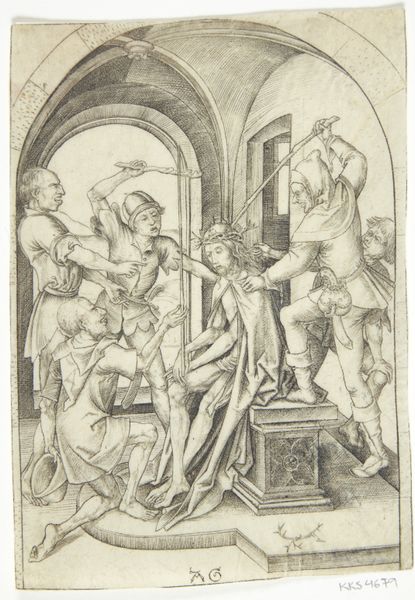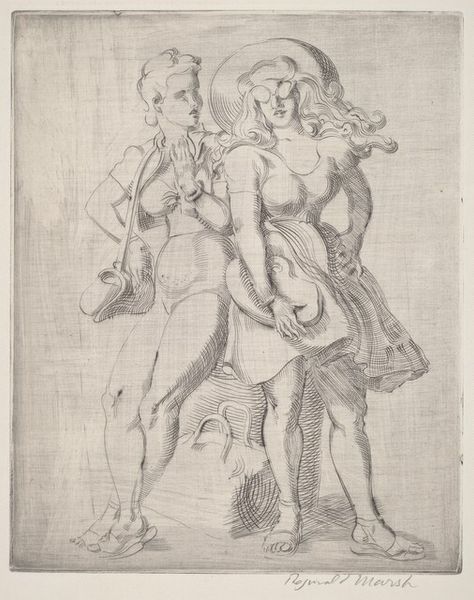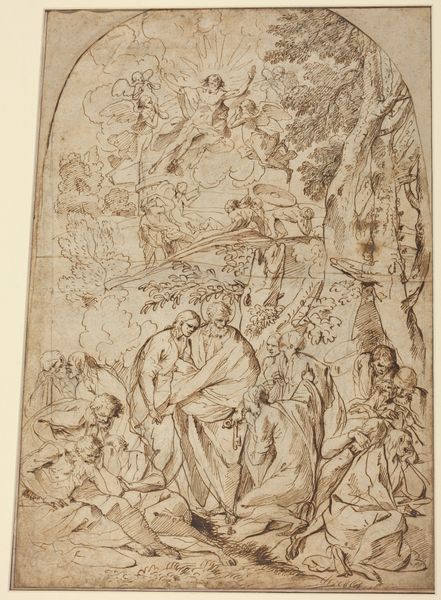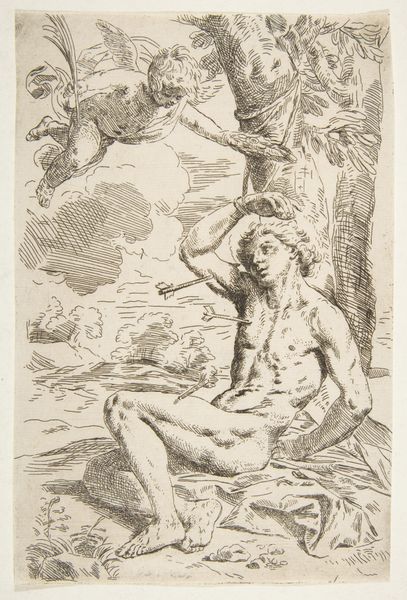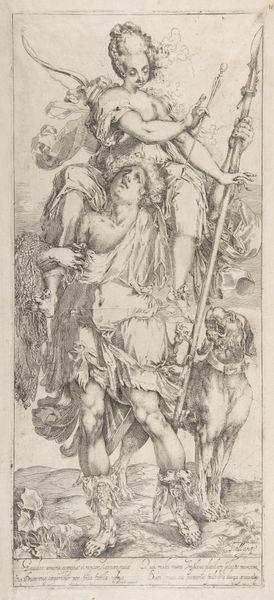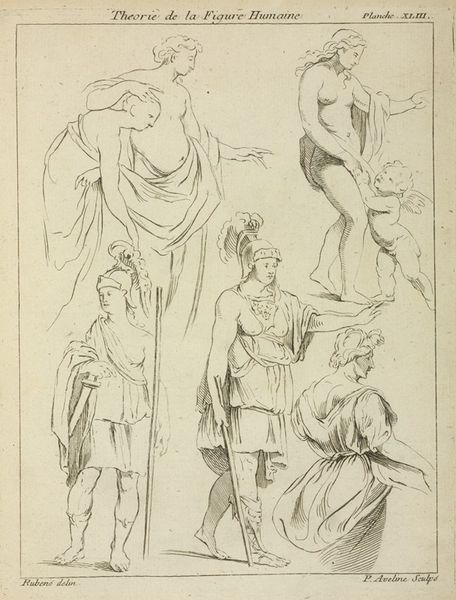
drawing, print, etching, engraving
#
drawing
# print
#
etching
#
genre-painting
#
academic-art
#
nude
#
engraving
#
realism
Dimensions: plate: 20.3 × 15.2 cm (8 × 6 in.) sheet: 24.6 × 17.7 cm (9 11/16 × 6 15/16 in.)
Copyright: National Gallery of Art: CC0 1.0
Editor: This is Reginald Marsh’s etching and engraving, "Guy Pène du Bois School of Art," from 1934. It shows an art class in session, sketching a nude model, and there are plaster casts hung on the back wall. I’m really drawn to the energy of the lines; they feel quick and lively, like a snapshot of a moment. What do you see in this work? Curator: Notice how Marsh situates this life drawing class within a specific lineage, "Guy Pène du Bois School of Art," connecting it to a particular artist and educational philosophy. What feelings arise when you contemplate how Marsh references historical artistic traditions here? Editor: It gives it a sense of history, I suppose, connecting this specific class to a larger movement or ideal. It feels like these students are trying to carry on something important. Curator: Precisely. And consider the presence of the plaster casts in the background. They’re more than just props; they're potent symbols. The cast of the flayed man might symbolize sacrifice in art, a need for rigorous practice. How does that resonate with the rest of the image? Editor: It's a stark contrast to the students who seem quite absorbed in their own work. Like they are supposed to aspire to some very difficult ideal. Curator: That tension is at the core of the print. Marsh seems to question if the traditions and symbols of art truly guide the present or if they merely loom as distant, unattainable ideals. The act of creation itself might be the genuine goal. Editor: I see, so he might be using those symbols to show the changing relationship artists have with tradition. Thanks, that gives me a lot to think about! Curator: And that tension gives the artwork its lasting appeal, making us reflect on our own relationship to the past, right?
Comments
No comments
Be the first to comment and join the conversation on the ultimate creative platform.
